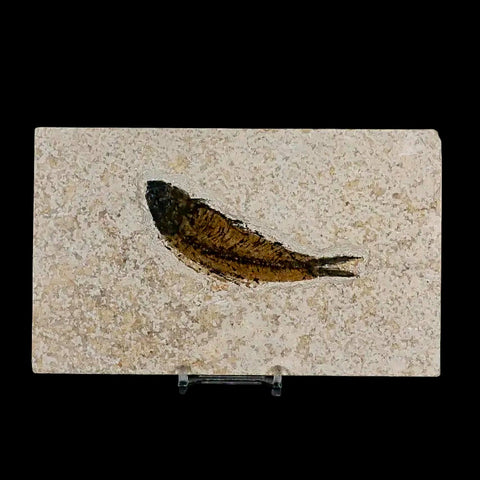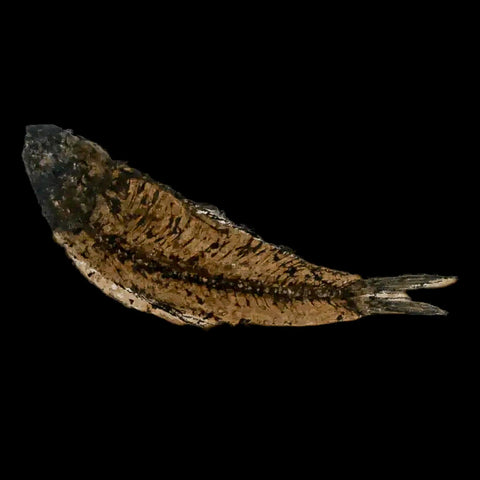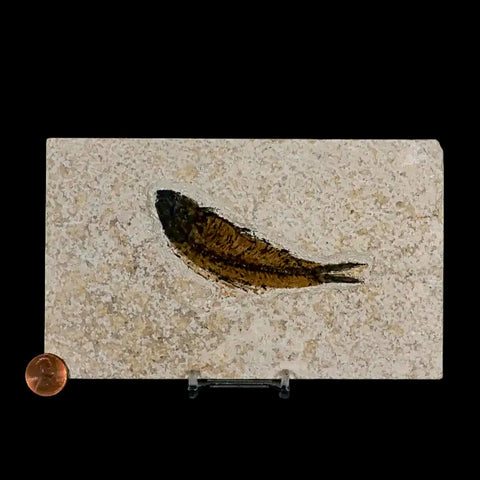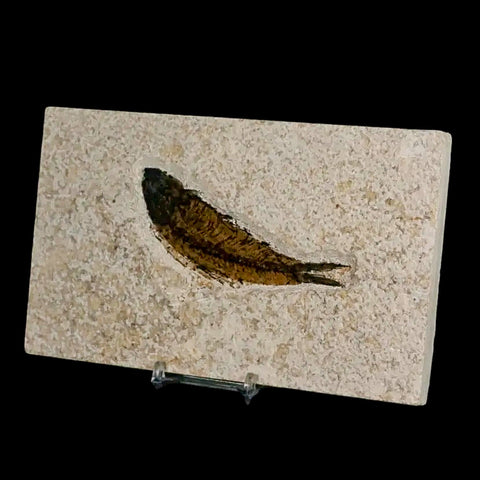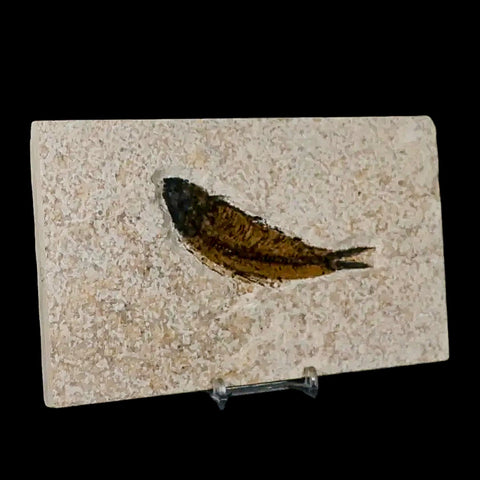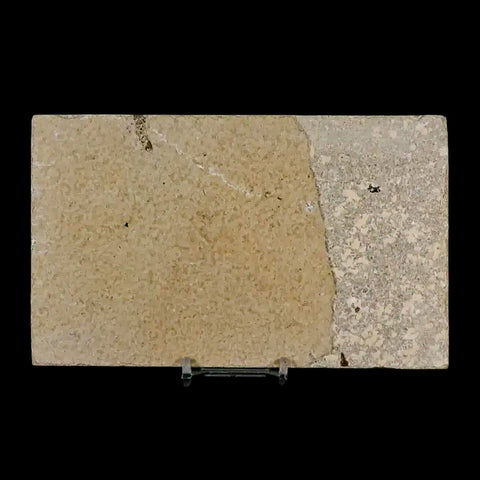3.7" Knightia Eocaena Fossil Fish Green River FM Wyoming Eocene Age COA & Stand
Location: Kemmerer, Wyoming
Weight: 1 Pound 2.3 Ounces
Dimensions: 6.7 Inches Long, 4.1 Inches Wide, 0.5 Inches Thick (Plate)
Fish Dimensions: 3.7 Inches Long, 1.1 Inches Wide
Comes with a Certificate of Authenticity.
Comes with a Free Stand.
The item pictured is the one you will receive.
50 million years old, Eocene age
Knightia Eocaena is the most common fish in Fossil Lake and may be the most commonly articulated vertebrate fossil in the world. It is Wyoming's State Fossil. Length: up to 25 cm (10 in).
Around fifty million years ago, the vast Fossil Lake stretched across what is now southwest Wyoming. From its sprawling 930-square-mile reach, about 500 square miles of sediment still endure. At the core, 230 square miles of this ancient lake bed hold some of the richest fossil deposits on Earth, alongside striking geologic formations like deltas, beaches, and springs—remnants of dynamic central and nearshore environments waiting to be uncovered.
The unusual chemistry of Fossil Lake prevented decay and scavenging of dead organisms, while millimeter-thick layers of alternating limestone deposits slowly accumulated. The result is laminated limestones that contain the highest concentration of fossil fish in the world. These fish, along with other aquatic organisms and associated geologic features, make Fossil Lake the world's best Paleogene record of the freshwater lake ecosystem.
Since their initial discovery in the 1870s, numerous exquisitely preserved fossil fish have been unearthed. The fish entombed in laminated limestone represent a comprehensive aquatic ecosystem that includes cyanobacteria, various plants, insects, and crustaceans such as shrimp, crawfish, and ostracods. This environment also supported amphibians like frogs and early salamanders, alongside alligators, turtles, birds, and mammals, notably the earliest pantolestid, an otter-like species. Surrounding the lake, the subtropical terrestrial habitat is documented by rare fossils including a horse, multiple snakes, lizards, two bat species, birds, an arboreal insectivore known as an apatemyid, a primitive carnivore called a miacoid, numerous insects, and an impressive assemblage of over 325 types of leaves, seeds, and flowers.



